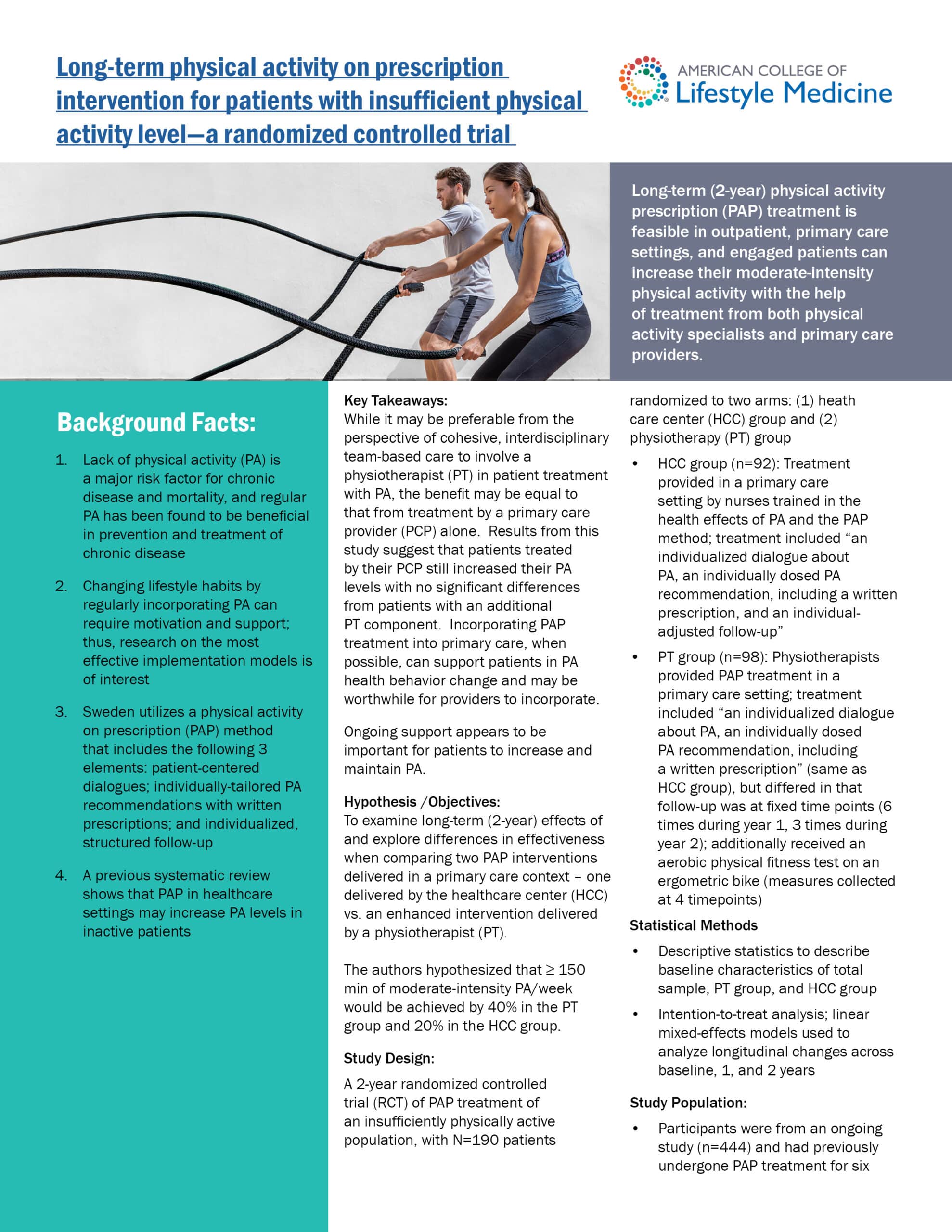Long-term Physical Activty on Prescription Intervention for Patients with Insufficient Physical Activity Levle – a Randomized Controlled Trial
Long-term (2-year) physical activity prescription (PAP) treatment is feasible in outpatient, primary care settings, and engaged patients can increase their moderate-intensity physical activity with the help of treatment from both physical activity specialists and primary care providers.
Findings
- HCC group: n= 92 randomized patients, 77 (84%) analyzed at 1-year follow-up, 67 (73%) analyzed at 2-year follow-up
- PT group: n=98 patients randomized, 83 (85%) analyzed at 1-year follow-up, 76 (78%) analyzed at 2 year follow-up
- Average baseline PA was low in both groups (described as a brisk walk for 30 min, 2-3 times per week or less)
- Both HCC and PT groups significantly increased PA levels compared to baseline; at 2-year follow-up, 31.4% of PT group and 38.5% of HCC group met public health recommendation for moderate intensity PA/week
- No significant differences in PA level or MET scores (a measure of PA) between the PT and HCC groups at the 2-year follow-up
- At 2-year follow up, both groups displayed improved HDL (p = 0.004), mental health status (p = 0.036), and BMI (p = 0.001), with no difference between them
- No significant longitudinal changes in other measures (waist circumference, blood pressure, fasting glucose, triglycerides, total cholesterol, LDL, PCS) were observed
- No between-group or within-group changes in reported medication group were observed at 1 or 2 year follow-up

